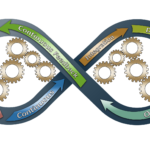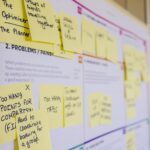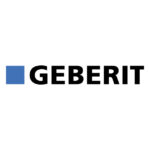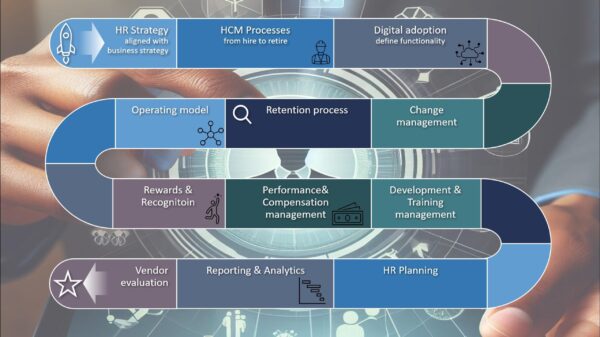HR Digital Adoption

The Appleton Greene Corporate Training Program (CTP) for HR Digital Adoption is provided by Mr. Hasenfratz Certified Learning Provider (CLP). Program Specifications: Monthly cost USD$2,500.00; Monthly Workshops 6 hours; Monthly Support 4 hours; Program Duration 12 months; Program orders subject to ongoing availability.

Personal Profile
Mr. Hasenfratz, MBA – IMC, is a globally recognized expert in Human Resources with an impressive career spanning over 25 years, starting with specializing in SAP-HR and process management. His extensive experience has established him as a distinguished business consultant, having successfully led international projects in Switzerland, Germany, Great Britain, Netherlands, France, Portugal, Poland, and the USA. This diverse exposure has afforded him a profound understanding of intercultural dynamics and the complexities of international project settings, serving clients ranging from medium-sized enterprises to global industry leaders.
As a project manager, Mr. Hasenfratz excels in stakeholder management, risk analysis, and subcontractor management. Demonstrating a unique ability to navigate the intricacies of near- and offshore projects with specific collaboration needs. His strategic leadership has been instrumental in the success of a wide array of projects, showcasing his proficiency in project management methodologies.
Throughout his career, Mr. Hasenfratz has played pivotal roles in the HR environment, particularly within the HCM industry. His contributions include redesigning operational processes, serving as a consultant for payroll implementation and data migration projects in Great Britain and Switzerland. His expertise extends to HR project leadership for the integration of newly acquired companies in the USA, the design of support center structures in France, and the implementation of payroll, compensation, and benefit systems for international agrochemical companies.
In addition to his SAP R/3 experience, Mr. Hasenfratz has a robust background in SuccessFactors, where he served as a program manager for the implementation of SuccessFactors Employee Central (EC) and Recruitment RM. His role as a data governance lead involved implementing new key performance indicators and analytics.
Mr. Hasenfratz’s market segment experience is extensive, spanning industries such as banking, biomedical technology, energy, environmental services, food, logistics, machine industry, optical industry, pharmaceuticals, plumbing technology, public sector, services, travel, and watchmaking.
In the professional services area, Mr. Hasenfratz’s expertise encompasses various SAP modules, reengineering in HR, HR training, travel expenses projects, organizational management implementation, compensation and payroll management, authority concept design, and interface implementation between PeopleSoft and SAP payroll, to name a few.
Mr. Hasenfratz’s multifaceted expertise, international experience, and strategic acumen make him a sought-after professional in the field of Human Resources and business consulting, contributing significantly to the success and efficiency of organizations across diverse industries. He is also a well-known speaker on HR subjects at several conferences.
To request further information about Mr. Hasenfratz through Appleton Greene, please Click Here.
(CLP) Programs
Appleton Greene corporate training programs are all process-driven. They are used as vehicles to implement tangible business processes within clients’ organizations, together with training, support and facilitation during the use of these processes. Corporate training programs are therefore implemented over a sustainable period of time, that is to say, between 1 year (incorporating 12 monthly workshops), and 4 years (incorporating 48 monthly workshops). Your program information guide will specify how long each program takes to complete. Each monthly workshop takes 6 hours to implement and can be undertaken either on the client’s premises, an Appleton Greene serviced office, or online via the internet. This enables clients to implement each part of their business process, before moving onto the next stage of the program and enables employees to plan their study time around their current work commitments. The result is far greater program benefit, over a more sustainable period of time and a significantly improved return on investment.
Appleton Greene uses standard and bespoke corporate training programs as vessels to transfer business process improvement knowledge into the heart of our clients’ organizations. Each individual program focuses upon the implementation of a specific business process, which enables clients to easily quantify their return on investment. There are hundreds of established Appleton Greene corporate training products now available to clients within customer services, e-business, finance, globalization, human resources, information technology, legal, management, marketing and production. It does not matter whether a client’s employees are located within one office, or an unlimited number of international offices, we can still bring them together to learn and implement specific business processes collectively. Our approach to global localization enables us to provide clients with a truly international service with that all important personal touch. Appleton Greene corporate training programs can be provided virtually or locally and they are all unique in that they individually focus upon a specific business function. All (CLP) programs are implemented over a sustainable period of time, usually between 1-4 years, incorporating 12-48 monthly workshops and professional support is consistently provided during this time by qualified learning providers and where appropriate, by Accredited Consultants.
Executive summary
HR Digital Adoption
In today’s rapidly evolving business landscape, the digital transformation of Human Capital Management (HCM) processes has become more crucial than ever before. Companies are increasingly recognizing the need to streamline their HR processes to ensure efficiency, compliance, and employee satisfaction. Having spent over 25 years as an International Management consultant in the HR environment, I have observed a common pitfall in many organizations – the tendency to focus on isolated components of the HR process rather than considering the entire end-to-end workflow. This fragmented approach often leads to suboptimal outcomes, leaving critical gaps in the overall process.
What are common pain points in HCM digital adoption:

Data Duplication: Eliminating Inconsistencies and Confusion
● One of the significant challenges in HCM digital adoption is data duplication. With multiple entry points for employee data, organizations can face inconsistencies and confusion, leading to errors in records. This can impact HR processes such as payroll, onboarding, and performance management.

Inefficient Workflows: Streamlining HR Processes for Efficiency
● Another pain point in HCM digital adoption is the presence of manual and disconnected workflows. The lack of integration between HR systems can result in inefficiencies in HR processes such as onboarding, payroll, and performance management.
Poor Data Accuracy: Ensuring Reliable and Up-to-date Information
● Maintaining data accuracy is crucial for effective decision-making. However, with data stored in silos, organizations can face challenges in ensuring the accuracy and timeliness of information. Outdated or incorrect data can lead to poor decision-making and hinder organizational growth.

Limited Reporting Capabilities: Gaining Insights for Strategic Decision-making
● The inability to consolidate data from different HR functions can hamper the generation of comprehensive reports. Without a holistic view of HR data, organizations may struggle to derive meaningful insights for strategic decision-making.
Time-Consuming Manual Processes: Automating Tasks for Efficiency
● Manual processes such as data entry, approvals, and updates can consume valuable time and resources. Without seamless integration between HR systems, organizations may struggle with inefficient and time-consuming tasks.
Compliance Risks: Mitigating Legal and Regulatory Challenges
● Inconsistent data and the lack of integration between HR systems can expose organizations to compliance risks. Compliance with legal and regulatory requirements is crucial for organizations to avoid penalties and maintain their reputation.

Employee Frustration: Enhancing User Experience for Better Engagement
● Disconnected systems can result in a poor user experience for employees, leading to frustration and reduced engagement commitment. Employees may find it challenging to navigate multiple platforms for their HR-related tasks, resulting in decreased productivity and satisfaction.
Difficulty in Tracking Employee Lifecycle: Ensuring Comprehensive HR Management
● The absence of integration between HR systems can make it challenging to track the complete employee lifecycle. From recruitment and onboarding to development and offboarding, organizations need a holistic view of employee information.
Increased IT Complexity: Simplifying System Management
● Managing multiple standalone HR systems can increase IT complexity and require additional resources for maintenance, updates, and troubleshooting.
In conclusion, HCM digital adoption comes with its fair share of challenges. However, organizations can overcome these pain points by implementing integrated HCM solutions that address data duplication, streamline workflows, ensure data accuracy, enhance reporting capabilities, automate manual processes, mitigate compliance risks, improve user experience, track the complete employee lifecycle, derive strategic insights, and simplify system management.

To address this challenge, I have created a comprehensive 12-month program, comprising 12 workshops, designed to provide organizations with a holistic understanding of HR digitalization. The workshops are designed to have a strong interaction with the involved stakeholders to get the most out of each individual client.
The core objective of this program is to guide businesses through a thorough evaluation of their HR processes, from strategy development to implementation, ensuring that no essential aspect is overlooked. Through my extensive experience, I have learned that a broad and all-encompassing view of HR digitalization is indispensable.
The general approach to HR digitalization:
The program takes you to a profound dive into your existing HR processes, examining each component in-depth. We start by examine the HR strategy, the foundational pillar upon which all HR activities should be built. From there, we explore the numerous processes within your organization, understanding their interconnections and dependencies.

The following topics are covered in depth:
HCM (human capital management) Processes, including recruitment, onboarding, performance management, employee engagement and retention, training, compensation, succession, employee e-files, planning and analytics. Each workshop is tailored to cover specific topics, ensuring a deep understanding of the subject matter.

Prioritizing Your Needs:
One of the central aspects of our program is the process of prioritization. We understand that not all HR processes are created equal. Some may require immediate attention and digitization, while others can follow in a phased manner. Through collaborative discussions and assessments in the workshops, we help you identify and prioritize these processes based on your organization’s unique needs and goals. This strategic approach ensures that resources are allocated reasonable, maximizing the impact of your digitalization efforts.

Seamless Implementation for lasting results:
Upon completing the program, your organization will not only possess a profound understanding of the fine details of HR digitalization but also a detailed roadmap for implementation. We assist you in selecting the right implementation partners, with tools to make the right vendor evaluation for your needs. This includes the best fitting operation model for your specific needs. You have a clear view if a cloud solution or on-premises solution or a blend of both is the best way forward.

Our goal is to ensure a seamless transition, where every stakeholder – from employees to managers and the HR department – is not just content but genuinely pleased with the new digital landscape. By harmonizing the needs of all parties involved, we facilitate a consistent work environment that fosters productivity and contentment.

In Conclusion:
I cordially invite you to join us on this transformative adventure. Our 12-month program entails more than simply a series of workshops; it involves a thorough investigation of your company’s HR procedures and concludes with a comprehensive digitalization strategy. Together, we will close the gaps, match your HR procedures with your company’s goals, and provide your workers with the skills they need for the future. I have no doubt that by adopting this all-encompassing strategy for HR digitization, your business will prosper in the digital era, with happy employees, content managers, and a well-run HR department. We appreciate your consideration of our program and look forward to seamless digitization in the future!
Here is a diagram of what you will achieve through the program.

Case Study: Nestlé’s IT HR Transformation Journey
Introduction:
Nestlé S.A., the global food and drink processing conglomerate, embarked on a transformative IT HR journey to align its core values with operational excellence. Giancarlo Pala, Head of IT HR at Nestlé, shared insights into this journey, highlighting the strategic shift amid the challenges posed by the COVID-19 pandemic.
Challenges and Solutions:
● Adapting to the Pandemic: Nestlé faced the dual challenge of ensuring staff safety in operational facilities while enhancing remote work experiences. A focus on staff well-being and digital connectivity was paramount.
● Global IT HR Transformation: Nestlé undertook a global IT HR Transformation initiative, integrating common HR operating models, HR data frameworks, and cloud HR foundations across 110+ countries.
● Innovative Digital Transformations: Nestlé embraced innovation, leveraging chatbots for enhanced candidate experiences and creating engaging learner ecosystems. Digital initiatives led to paperless factories, aligning with sustainability goals.
● Balancing Global and Local Needs: Navigating mature markets like China required a delicate balance between global processes and local adaptations. Nestlé utilized open APIs and robust technology, ensuring scalability while accommodating diverse legal requirements.
Outcomes and Future Prospects:
● Enhanced User Experience: The implementation of an HCM System for Compensation and Commissions solutions streamlined processes, resulting in a 95% automation rate for salary changes and increased efficiency.
● People and Enterprise Analytics: Nestlé is set to launch comprehensive analytics, focusing on learning effectiveness and broader enterprise-level use cases.
● Continued Digital Evolution: The journey ahead involves supporting Nestlé’s businesses through organic growth, emphasizing employee, candidate, and learner experiences. The organization anticipates an exhilarating yet challenging path, marked by continuous innovation and competency development.
Conclusion:
Nestlé’s IT HR transformation stands as a testament to strategic foresight and adaptability. Giancarlo Pala’s vision reflects the organization’s commitment to employee well-being, innovative solutions, and a future-focused approach. As Nestlé navigates the evolving digital landscape, the journey promises not only operational excellence but also delightful consumer experiences.
Note: This case study provides a condensed overview of Nestlé’s IT HR transformation journey, capturing key challenges, solutions, outcomes, and future prospects outlined by Giancarlo Pala, Head of IT HR at Nestlé.
Curriculum
HR Digital Adoption – Part 1- Year 1
- Part 1 Month 1 HR Strategy
- Part 1 Month 2 HCM Processes
- Part 1 Month 3 Digital Adoption
- Part 1 Month 4 Change Management
- Part 1 Month 5 Retention Process
- Part 1 Month 6 Operation Model
- Part 1 Month 7 Rewards & Recognition
- Part 1 Month 8 Performance & Compensation Management
- Part 1 Month 9 Development & Training Management
- Part 1 Month 10 HR Planning
- Part 1 Month 11 Reporting & Analytics
- Part 1 Month 12 Vendor Evaluation
Program Objectives
The following list represents the Key Program Objectives (KPO) for the Appleton Greene HR Digital Adoption corporate training program.
HR Digital Adoption – Part 1- Year 1
- Part 1 Month 1 HR Strategy – The program’s activities focus on thoroughly analyzing the synergy between business and HR strategies in order to achieve organizational excellence. The primary purpose is to conduct research to guarantee that the results of the business plan are effectively linked with the relevant HR strategy. This perfect alignment serves as the foundation for developing a workforce that not only accepts the company’s vision and values, but also works toward its long-term goals. This precise alignment serves as the foundation for cultivating a workforce that not only embraces the company’s vision and values, but also advances its ultimate goals. The program acknowledges the interdependence of business features like as market expansion and product diversity, which have direct ramifications for HR procedures. An important aspect of the program is the creation of an effective 6-hour workshop approach. This workshop is intended to serve as an incubator for in-depth talks and strategic planning, encouraging active participation from key stakeholders in a collaborative environment. Furthermore, the workshop month 1 encourages the use of a customized checklist tailored to the organization’s specific needs. This checklist serves as a guiding framework, carefully directing the alignment process and preventing crucial areas from being overlooked. The program aims to build a strong relationship between business and HR strategy by combining strategic workshops, detailed analysis, and a customized checklist. Finally, this approach seeks not only to achieve alignment between HR processes and overarching company goals, but also to build an agile, adaptable, and successful organizational unit capable of victory in the dynamic competitive field.
- Part 1 Month 2 HCM Processes – The first step in defining the Human Capital Management (HCM) landscape is for the organizational strategy to rigorously identify all HCM processes. This entails conducting a thorough investigation to identify the procedures that are most important to the company’s overall success. By identifying vital activities, the organization can strategically spend resources and attention to those that are important, connecting HCM programs with overall business objectives. Furthermore, a detailed approach is used to identify and protect critical HCM procedures that must be kept intact. The guideline is clear: do not change processes that provide no additional value, particularly those related to personnel and HR management. Recognizing these processes as vital but static components enables the business to focus its attention on more effective areas of innovation and improvement. This two-pronged method entails a proactive understanding of the HCM environment, identifying critical procedures for optimization while also appreciating and preserving the stability of specific processes that serve as the foundation for effective employee and HR management. The main goal is to develop a dynamic and strategic HCM framework in which changes are intentional, enhancing value while preserving the core pieces required for organizational stability and functionality.
- Part 1 Month 3 Digital Adoption – In the context of digital adoption, the organizational imperative begins with an in-depth overview and study of the necessary processes adapted to the company’s specific requirements. This entails conducting a thorough investigation and determining the software and apps required to improve both administrative procedures and employee experiences. The strategic integration of technology seeks not only to speed up administrative activities, but also to improve the efficiency and overall quality of life for employees inside the digital ecosystem. Furthermore, the digital adoption campaign is shaped by a systematic approach to specifying the functionality of certain software and apps. Prioritization becomes critical during this process, as the company defines and categorizes functions based on their importance. These prioritized functions are then carefully placed onto a roadmap, which acts as a visual guide for the stepwise introduction of digital technologies. This plan enables a systematic deployment while also aligning with the company’s overall goals and timetables. The heart of this strategy is not simply embracing digital tools for the sake of technology, but rather a deliberate integration that streamlines processes, improves user experiences, and adds to the organization’s overarching goals. By going through this methodical process of identifying, prioritizing, and mapping functionality, the business embarks on a transformative digital adoption path that fosters efficiency, agility, and a tech-savvy organizational culture.
- Part 1 Month 4 Change Management – In terms of change management and user acceptance, the organizational focus begins with a thorough definition of the change management strategy. This entails a thorough examination of the actions and methodologies required to support and ensure the success of organizational reforms. Strategic planning and stakeholder engagement transform the change management strategy into a guiding framework for smoothly managing transitions. Simultaneously, the organization begins to define the ideal usability and user experience (UX) parameters. This requires carefully considering how new technologies or processes might be made to be user-friendly, resulting in a positive and efficient experience. The goal is to create an atmosphere in which the workforce not only accepts change but finds the new tools and processes simple and empowering. This two-pronged approach recognizes that effective change management extends beyond procedural changes, embracing the human element through a sympathetic and supportive strategy. The formulation of a strong change management plan is supplemented by a clear vision for usability and UX, ensuring that the integration of new technologies matches with the organization’s goals and improves user satisfaction and productivity. Finally, this integrated approach to change management and user adoption lays the groundwork for a more agile, responsive, and user-centric organizational culture.
- Part 1 Month 5 Retention Process – The organizational strategy begins by defining important criteria and functions that are critical to ensuring employee retention. This entails conducting a thorough investigation to uncover the variables that resonate with employees, establishing a sense of dedication and devotion to the firm. By defining these important characteristics, the business creates a basis for proactively addressing and meeting the requirements and expectations of its workforce. When an effective retention procedure is created, it becomes a critical component in building a dedicated and committed workforce. Its impact goes beyond the immediate reduction in turnover rates, affecting the organizational structure and resulting in a stable and highly productive work environment. This process is more than just a procedural feature; it is a strategic requirement that greatly contributes to increased employee satisfaction. The positive ripple effect is obvious in increased productivity, resulting in a symbiotic relationship between employee satisfaction and long-term organizational performance. The ultimate goal of this retention strategy is to foster a workplace culture in which people not only stay but flourish and contribute meaningfully. It frames the business for long-term success by creating an environment in which people feel valued, supported, and connected to the broader mission, resulting in a harmonic combination of individual and collective achievement.
- Part 1 Month 6 Operation Model – The development of a strong operating model for Human Resources (HR) begins with a strategic definition of tasks, determining which components are best handled in-house and which should be outsourced to a service provider. This entails doing a thorough examination of the organization’s capabilities, taking into account elements such as expertise, resources, and cost-effectiveness. The separation of in-house responsibilities and external cooperation serves as the foundation for an optimal HR operational structure. An efficient HR operating model goes beyond simply assigning responsibilities; it is a comprehensive approach that seamlessly combines HR operations. This integration improves efficiency by optimizing operations to align with the organization’s overarching goals. The model serves as a strategic roadmap, driving HR actions in a way that addresses urgent needs while also contributing to the organization’s long-term success. When properly handled, this operational model provides a dynamic and responsive HR environment. It combines internal capabilities with external expertise, resulting in a synergistic strategy that improves total HR effectiveness. By integrating HR operations with corporate goals, the operating model serves as a catalyst for organizational performance, promoting adaptation, efficiency, and strategic agility in the ever-changing business landscape.
- Part 1 Month 7 Rewards & Recognition – Developing a complete strategy to Rewards and Recognition begins with a strategic definition of the specific rewards and recognition mechanisms that must be applied within the organizational structure. This entails doing a thorough analysis that takes into account elements such as employee preferences, performance measures, and corporate culture. The identification of these aspects serves as the foundation for developing a bespoke system that connects with the workforce. An efficient Rewards and Recognition program is not a supplementary but essential component of talent management. It is more than a simple symbolic gesture; it is an important part of the organization’s talent development and retention strategy. Organizations foster a positive and stimulating workplace culture by recognizing and celebrating successes. This, in turn, boosts employee morale and engagement, creating an environment in which people feel valued and respected. When properly executed, the Rewards and Recognition initiative may be a powerful instrument for talent retention and corporate success. It is consistent with talent management goals, offering a tangible indication of the organization’s commitment to recognizing and rewarding outstanding achievements. Through this method, the business establishes a positive feedback loop, motivating continual improvement and developing a workforce that is not just skilled but also motivated and dedicated to the group’s common goals.
- Part 1 Month 8 Performance & Compensation Management – Performance and compensation are carefully defined or updated as part of strategic management. This makes sure that the company has a fair payment system that is based on goals. This entails doing a thorough examination of performance measurements and aligning financial incentives with individual and organizational accomplishments. Simultaneously, the implementation of an effective appraisal system becomes critical in analysing goal settings and job duties. This process allows for a more comprehensive evaluation, identifying accomplishments and areas for growth while also offering a road map for ongoing professional development. Establishing or adjusting a structured pay scale is a critical component of this management method. This scale is precisely built to correspond with industry standards while taking into account the organization’s diversity of job titles and levels of responsibility. This assures equity and openness in remuneration methods, which promotes a pleasant work environment. To further improve the system, the strategic design of incentive plans and bonuses takes centre stage. These plans are methodically designed to reward excellent performance, the achievement of goals, or the successful completion of certain milestones. By directly tying compensation to performance, organizations build a potent motivating tool that promotes excellence, aligns with organizational goals, and offers a dynamic framework for the total growth of the workforce.
- Part 1 Month 9 Development & Training Management – The first step in the strategic imperative of growth & Training is to carefully identify the growth needs of each employee. This entails doing a thorough study to identify areas where skills and competencies can be improved to better correspond with the organization’s changing needs. During this process, a targeted approach to training and development opportunities is developed, with programs tailored to address specific skill gaps and cultivate a workforce that is not just talented but also flexible to changing industry environments. This strategic focus on Development and Training is more than just a standard HR activity; it is a critical component in talent attraction and retention. Organizations that provide opportunities for continuous learning not only demonstrate their commitment to employee development, but also increase engagement and satisfaction levels. This, in turn, helps to the development of a talented and adaptive staff, helping the business compete in the market. The multifaceted contributions to organizational performance demonstrate Development & Training’s overall significance. It becomes a driving force in supporting both individual and collective progress, creating an environment in which employees feel empowered and aligned with the organization’s goals. In essence, this strategic endeavor acts as a catalyst for increased competitiveness, organizational agility, and long-term success in the ever-changing commercial market.
- Part 1 Month 10 HR Planning – The strategic core of HR planning is carefully defined, with the goal of optimizing human capital and meeting corporate needs like lowering talent gaps and keeping labor costs low. This entails doing a thorough analysis, aligning HR strategies with broader business goals, and ensuring that the organization’s strategic objectives are realized. Through good HR planning, the business not only optimizes its staff but also provides a proactive reaction to talent-related difficulties, promoting long-term stability and efficiency. Simultaneously, the need of Diversity Inclusion gains prominence. This entails a purposeful effort to ensure that workforce diversity and inclusion are not simply recognized, but actively integrated into the organizational fabric. This includes creating an environment that upholds the organization’s principles and welcomes varied opinions. HR Planning promotes diversity and inclusion, resulting in a vibrant and inventive workplace culture that capitalizes on the diverse workforce’s distinct skills and talents. HR Planning has a far-reaching impact, going beyond talent optimization and cost control to cultivate a workplace that represents the principles of diversity and inclusion. In short, good HR Planning serves as a strategic facilitator, aligning human capital with organizational goals and cultivating an inclusive culture that not only addresses the organization’s immediate requirements but also prepares it for long-term success in a dynamic and competitive environment.
- Part 1 Month 11 Reporting & Analytics – Reporting and analytics are important parts of human capital management (HCM) because they give HR workers and managers information they need. This data provides insight into organizational dynamics, allowing for the discovery of patterns, trends, and potential areas for development in human resource procedures. Comprehensive reporting provides firms with valuable information for informed decision-making, strategic planning, and effective resource allocation. Beyond reporting, HCM Analytics emerges as a disruptive force, enabling HR professionals to adopt a data-driven strategy. This paradigm change enables firms to make proactive decisions, anticipating issues and optimizing personnel strategies. Analytics, by exceeding traditional, reactive HR approaches, serves as a driver for organizational growth. This transformation extends to driving better employee experiences, as firms intentionally use data to create settings that meet their wants and expectations. In essence, the integration of Reporting and Analytics in HCM turns HR from a reactive to a proactive force inside the enterprise. This evolution extends beyond HR procedures and contributes to overall corporate success. The strategic use of data not only improves operational efficiency, but also prepares the company for agility, flexibility, and long-term success in a changing business landscape.
- Part 1 Month 12 Vendor Evaluation – A careful and effective process makes sure that any software investment fits perfectly with the needs of the company, which is why Vendor Evaluation is so important from a strategic point of view. This evaluation technique serves as a vital checkpoint, preventing misalignments and maximizing return on investment. It is more than just a procurement activity; it is a strategic endeavor with the ability to dramatically benefit the organization’s growth and success. This approach entails a thorough examination of the software solution’s long-term impact and scalability, in addition to its immediate features. The goal is to select a provider whose solution not only fits current requirements but is also adaptable to the organization’s changing needs. The software vendor evaluation process is critical in reducing the risks associated with technology adoption. It guarantees that the chosen solution serves as a strategic enabler rather than a transactional acquisition. The criteria include not just technical parameters, but also vendor reputation, support capabilities, and the possibility of collaboration. In essence, good vendor evaluation is a proactive strategy that positions the organization for technology resilience and success. It is a critical stage in ensuring that the software solution becomes an asset rather than a liability, enhancing the organization’s efficiency, innovation, and long-term success in an ever-changing technological world.
Methodology
HR Digital Adoption
Human Capital Management (HCM) process optimization involves aligning human resource practices with strategic organizational goals to maximize efficiency, productivity, and employee satisfaction. Several methodologies are commonly used for HCM process optimization and strategic goal alignment:

Six Sigma:
Focus: Six Sigma is a data-driven methodology that aims to eliminate defects and improve process efficiency.
Application in HCM: Six Sigma can be applied to HR processes to reduce errors, enhance accuracy in workforce planning, and improve overall efficiency in recruitment, onboarding, and performance management.
Lean Management:
Focus: Lean management emphasizes the elimination of waste and continuous improvement of processes.
Application in HCM: Lean principles can be applied to HR processes to streamline workflows, reduce administrative overhead, and create more efficient talent acquisition and employee development processes.

Balanced Scorecard:
Focus: The Balanced Scorecard is a strategic planning and management system that aligns business activities with the organization’s vision and strategy.
Application in HCM: This methodology helps in aligning HR processes with organizational goals by measuring and monitoring key performance indicators related to workforce productivity, employee satisfaction, and other strategic HR metrics.

Agile Methodology:
Focus: Originally developed for software development, Agile is an iterative and collaborative approach that values flexibility and adaptability.
Application in HCM: Agile principles can be applied to HR processes, especially in talent acquisition and project management, allowing HR teams to respond quickly to changing business needs and market conditions.
Performance Management Systems:
Focus: Performance management systems involve the continuous monitoring and evaluation of employee performance.
Application in HCM: Implementing robust performance management systems helps align individual and team goals with organizational objectives, ensuring that employees contribute effectively to strategic goals.

Strategic Workforce Planning:
Focus: Strategic workforce planning involves anticipating future talent needs and aligning workforce strategies with overall business objectives.
Application in HCM: By proactively identifying skill gaps and ensuring the right talent is in place, strategic workforce planning supports organizational goals and fosters agility in responding to market changes.
Conclusion:
Successful HCM process optimization often involves a combination of these methodologies, tailored to the specific needs and goals of the organization. To achieve the best outcomes, the appropriate strategy, or a combination of some of the methodologies described, will be employed in this course.
Industries
This service is primarily available to the following industry sectors:
Pharma
In the rapidly evolving landscape of the pharmaceutical sector, the optimization of human resource processes emerges as a linchpin for sustainable success. Beyond the cut-throat competition, the industry demands a nuanced approach to talent management. Tailored HR solutions in the pharmaceutical sphere extend beyond the recruitment of top scientific minds; they are complexly woven into the fabric of operational efficiency, acting as a catalyst for innovation and cost-effectiveness.
In this dynamic milieu, strategic workforce planning takes centre stage, aligning human capital with the overarching goals of the organization. The synergy of a well-crafted talent acquisition strategy ensures not only the attraction of top-tier scientific talent but also the cautious utilization of resources to streamline operational processes, thereby mitigating overhead costs. This two-tier strategy not only fortifies the intellectual expertise of the workforce but also enables substantial cost reductions, allowing organizations to redirect vital resources towards critical research and development activities.
A finely tuned human resource framework in the pharmaceutical sector serves as the cornerstone for resilience within market fluctuations. By fostering a culture of continuous learning and adaptability, organizations can navigate the challenges inherent in drug development and regulatory landscapes. As pharmaceutical companies deal with the imperative of innovation and fiscal responsibility, strategic human resource management emerges as the linchpin for achieving a delicate balance between scientific excellence and operational efficiency in this high-stakes industry.
Banking & Financial Services
Within the dynamic realm of banking and financial services, human resource solutions play a pivotal role in navigating the complexities of talent management and operational efficiency. In this ever-evolving landscape, HR solutions extend beyond the mere attraction of top financial talent; they are tailored to maximize cost-effectiveness and operational agility.
A robust HR solution in the banking sector specializes in designing lean and efficient organizational structures, optimizing workflows, and deploying cutting-edge technologies to enhance overall employee productivity. This multifaceted approach not only ensures the recruitment of skilled financial professionals, but also strategically aligns organizational structures with evolving industry demands.
Strategic talent management emerges as a cornerstone in achieving a delicate balance between workforce excellence and substantial cost reductions. By implementing forward-thinking HR strategies, financial institutions can foster a culture of innovation, adaptability, and continuous learning, enabling them to stay ahead in a competitive market.
Moreover, a proficient HR solution in the banking and financial services sector is keenly adapted to industry regulations and compliance requirements. This ensures that the workforce is not only highly skilled but also familiar in navigating the complex legal and regulatory landscape, mitigating risks and fostering a culture of integrity.
In essence, a comprehensive HR strategy in banking and financial services is necessary for sustainable success. It goes beyond talent acquisition to become an integral component of organizational resilience, contributing to a harmonious balance between workforce excellence and operational efficiency in an industry where adaptability and strategic foresight are paramount.
Energy
In the wide and ever-evolving energy sector, the human resource function stands as a linchpin, steering the industry towards innovation and sustainability. Beyond the imperative of operational efficiency, HR solutions within the energy sector are carefully crafted to streamline workforce management and prompt substantial cost reductions, fostering a dynamic and adaptive work environment.
Strategic talent acquisition takes centre stage, with HR professionals working to assemble agile teams capable of navigating the comprehensive complexities of the energy industry. The emphasis on workforce optimization ensures that companies not only attract top-tier talent but also cultivate a versatile and skilled workforce that can readily respond to industry shifts and technological advancements.
Beyond talent, a strategic focus on process efficiency and employee productivity becomes integral to achieving overarching organizational goals. This two-tier approach not only leads to significant cost savings but also frees up resources for strategic investments in sustainable energy solutions and cutting-edge technological advancements. In this way, human resource solutions in the energy sector become instrumental in propelling organizations towards a future where innovation and environmental consciousness coalesce.
Moreover, the energy sector is confronted with an ever-changing regulatory landscape and global environmental concerns. HR professionals play a pivotal role in ensuring that the workforce is not only adept at staying to evolving regulations, but also actively engaged in developing and implementing sustainable practices. In essence, the role of human resources extends beyond the traditional realm, becoming a catalyst for transformative change in the energy sector, where the pursuit of innovation and sustainability are inseparable.

Machine Industry
Within the dynamic realm of the machine industry, where technological advancements are the lifeblood, the role of human resources takes centre stage in shaping a future powered by innovation and efficiency. HR solutions in this sector are carefully crafted to identify and nurture talent with a robust technological background, ensuring that organizations not only keep pace with industry developments but also lead in driving innovation.
Strategic talent acquisition becomes a linchpin, as HR professionals work to assemble teams equipped with the skills necessary to propel the machine industry forward. This goes beyond merely filling positions; it involves cultivating a workforce that is adaptive, forward-thinking, and capable of navigating the details of cutting-edge technologies.
Efficient workforce planning and process optimization further amplify the impact of HR solutions in the machine industry. This strategic approach not only ensures a high level of productivity but also contributes to the reduction of operational costs. By aligning talent management with organizational goals and implementing cost-effective HR strategies, the machine industry achieves a delicate balance between staying at the forefront of innovation and maintaining a lean, cost-efficient workforce.
In this ever-evolving landscape, HR professionals play a fundamental role in creating a culture of continuous learning and adaptability. By fostering an environment that values skill development and embraces change, the machine industry remains agile, ready to embrace emerging technologies, and adapt to market dynamics. In essence, the strategic fusion of talent management and cost-effective HR solutions propels the machine industry towards sustained success and technological leadership.

Public Sector
Within the complex landscape of the public sector, the human resource function emerges as a critical driver in addressing the unique challenges of recruiting and retaining a diverse workforce capable of meeting the multifaceted demands of society. In this complex environment, HR solutions are strategically designed to emphasise the values of inclusivity, diversity, and detailed workforce planning.
The emphasis on inclusivity and diversity within HR solutions not only reflects the commitment to equality but also recognizes the inherent strength derived from a workforce characteristic of varied backgrounds and perspectives. Strategic workforce planning becomes pivotal, aligning organizational goals with the evolving needs of the community. This involves not only attracting talent, but also cultivating an environment that nurtures the growth and development of employees, fostering long-term commitment.
Organizational restructuring is a key aspect of HR strategies in the public sector, aiming to enhance operational efficiency and responsiveness. The incorporation of cost-effective HR technologies further amplifies these efforts, ensuring that public sector organizations achieve significant cost reductions while maintaining a high standard of service quality. The thoughtful use of technology streamlines administrative processes, allowing resources to be redirected towards essential public services and community-centric initiatives.
In essence, HR solutions in the public sector extend beyond traditional roles, evolving into strategic tools that navigate the complexities of public needs. By fostering a diverse and engaged workforce through inclusive practices and strategic planning, HR becomes an integral force in ensuring that public sector organizations not only adapt to change, but also lead in shaping a more equitable and responsive future for the communities they serve.

Service
In the dynamic landscape of the service business, where customer happiness is key, the integration of human resources and financial management becomes indispensable for success. In this industry, where service quality is critical, an effective HR solution is intricately woven with a dedication to customer-centric training, with the goal of cultivating a skilled and motivated workforce that continuously meets and exceeds customer expectations.
The strategic focus on streamlined processes, optimization of staffing levels, and the adept use of technology stands as a cornerstone in achieving efficiency and cost-effectiveness in service delivery. HR solutions play a fundamental role in implementing these measures, enabling service-oriented businesses to realize significant cost reductions while maintaining high standards of service quality. This not only contributes to improved operational efficiency but also positions businesses to respond dynamically to market fluctuations and evolving customer demands.
A strategic approach to talent management is central to aligning the workforce with the dynamic needs of customers. By fostering a culture of customer-centricity within the workforce, businesses can enhance service outcomes, build customer loyalty, and positively impact the bottom line. HR professionals play a key role in identifying, developing, and retaining talent that represents the values of the organization and is dedicated to delivering exceptional service experiences.
In essence, the holistic integration of HR and financial management solutions in the service industry is critical in navigating the details of customer-centric operations. It empowers businesses not only to meet but to surpass customer expectations, ensuring sustained success in an environment where service excellence is the ultimate differentiator.
Locations
This service is primarily available within the following locations:

Zurich, Switzerland
Zurich, the financial nucleus of Switzerland, stands as a testament to the nation’s economic ability and innovative spirit. As the largest city in Switzerland, Zurich is not merely a geographical giant but a vibrant hub of economic activity and technological advancement. At the forefront of this technological evolution are institutions like ETH Zurich and global tech giant Google, transforming Zurich into a global epicentre for cutting-edge research and innovation.
The city’s economic significance is intertwined with its reputation as a premier destination for both work and living. Zurich seamlessly combines urban sophistication with natural splendor, nestled between the serene Lake Zurich and the majestic Swiss Alps. This harmonious blend creates an environment that appeals to professionals and residents alike, offering an unparalleled quality of life.
Zurich’s efficient public transport system, world-class healthcare facilities, and top-notch educational institutions contribute to its allure as a great place to live and work. The city’s thriving ecosystem fosters personal and professional growth, providing a conducive environment for individuals to flourish.
Looking ahead, Zurich’s future appears promising, driven by its commitment to innovation and economic excellence. The city’s role as a financial and technological powerhouse is likely to strengthen, attracting global talent and fostering collaboration between academia and industry. As Zurich continues to evolve, it is poised to remain a beacon of economic prosperity, technological innovation, and an ideal destination for those seeking a fulfilling life and career.

London, UK
London, the financial heartbeat of Great Britain and the largest city in the UK, stands at the forefront of global finance, particularly as a banking hot spot. Nestled along the iconic River Thames, the city’s skyline, adorned with towering skyscrapers and bustling trading floors, reflects its role as a global epicentre for financial services. London continues to drive innovation and growth, shaping the trajectory of the world of finance.
Despite its reputation for being an expensive metropolis, London remains an unparalleled destination for both work and life. The city’s appeal transcends its economic significance, drawing strength from its cultural diversity, historic landmarks, and vibrant arts and culinary scene. London functions as a global melting pot, attracting talents and ideas from around the world, fostering an environment that thrives on creativity and innovation.
The city’s allure is not solely based on economic opportunities; it extends to the exceptional quality of life it offers. While challenges related to affordability persist, London has demonstrated an impressive ability to adapt, diversify, and consistently attract top talents. This adaptability ensures London’s enduring status as a powerhouse in the world economy.
Looking ahead, London’s future appears promising. The city’s capacity to navigate the complexities of an evolving global landscape, coupled with its resilience and ability to attract diverse talents, solidifies its position as a beacon of opportunity. London is prepared to remain a vibrant, dynamic, and ever-evolving hub, offering a compelling blend of economic prosperity and a rich, diverse lifestyle for professionals and residents alike.
Berlin, Germany
Berlin, the vibrant capital of Germany, emerges as a city that seamlessly weaves together history, culture, and innovation. Not only is it the political nucleus of the country, but as the largest city in Germany, Berlin stands as a testament to resilience and adaptability. Its identity as a German trust hotspot elevates its significance, going beyond political discourse to become a thriving centre for trust-related activities, fostering collaboration and strategic partnerships.
Living and working in Berlin provides an unparalleled quality of life. The city’s allure starts from its rich cultural heritage, world-class museums, lively arts scene, and an eclectic culinary landscape. Berlin functions as a melting pot of ideas and creativity, drawing individuals from diverse backgrounds and industries. Its magnetic charm lies not only in economic opportunities, but also in the welcoming atmosphere that underscores a commitment to fostering a strong sense of community.
Looking into the future, Berlin’s prospects are promising and multifaceted. The city’s vibrant startup ecosystem, complemented by its established industrial base, positions it as a powerhouse of innovation. Berlin’s demonstrated ability to adapt, diversify, and invest in its people sets the stage for a future marked by sustained economic growth, cultural richness, and a high quality of life. As Berlin continues to evolve, it promises to be an exciting and alluring destination for professionals and residents alike, offering a dynamic blend of opportunity and a thriving cultural landscape at the heart of Germany.

Vienna, Austria
Vienna, the majestic capital of Austria, stands as a harmonious blend of tradition, economic vitality, and cultural splendour. Serving as both the political epicentre and the largest city in Austria, Vienna is a symbol of stability and progress in the heart of Europe. Its reputation extends beyond its political significance, encompassing a diverse economic landscape that includes prominent industries such as banking and production.
The city’s allure goes beyond its economic vibrancy. Vienna is a living testament to history, boasting a rich and storied past reflected in its splendid architecture and iconic landmarks. From the regal Schönbrunn Palace to the Gothic marvels of St. Stephen’s Cathedral, Vienna’s landscape is adorned with reminders of its cultural heritage. This historical charm coexists seamlessly with the modern pulse of the city, creating a unique and inviting environment.
Vienna is not just a city of historical significance; it is also a wonderful place to work and live. The blend of economic opportunities, cultural amenities, and a commitment to providing an exceptional quality of life makes Vienna an attractive destination for professionals and residents alike. Its reputation as a city with lovely buildings is matched by its reputation as a city with a high standard of living.
Looking ahead, Vienna’s future appears promising and dynamic. The city’s ability to preserve its historical legacy while embracing innovation positions it for continued economic growth and cultural richness. Vienna is set to remain a beacon of stability, offering a perfect synthesis of history, economic opportunity, and an exceptional living experience for those who choose to call it home. As Vienna continues its journey into the future, it stands poised to maintain its status as a city where the past and present coalesce in a truly remarkable way.

Philadelphia, USA
Philadelphia, affectionately known as Philly, stands as a city that weaves the tapestry of American history, cultural vibrancy, and contemporary influence. As the most populous city in Pennsylvania, it holds a distinctive position in the United States, not only for its sheer size but also for its profound historical significance.
Philadelphia’s historical legacy is deeply embedded in the fabric of American identity. The iconic Liberty Bell, symbolizing the struggle for independence, resonates as a testament to the city’s pivotal role in the birth of the nation. This rich history is not just a relic of the past; it continues to shape the city’s character and identity.
Beyond its historical eminence, Philadelphia is a dynamic hub of contemporary influence. In business and industry, the city has emerged as a significant player, fostering innovation and entrepreneurship. Its cultural scene is marked by a vibrant arts community, while sports and music add a modern rhythm to the city’s heartbeat. Philadelphia’s influence extends beyond its borders, making it a city that leaves an indelible mark on the national stage.
Looking ahead, Philadelphia’s future appears promising and multifaceted. The city’s commitment to preserving its historical treasures while embracing modernity positions it for continued growth and influence. As a hub for business, culture, sports, and music, Philadelphia is poised to remain a dynamic centre, attracting talent and driving innovation. The Liberty Bell may ring with echoes of the past, but Philadelphia’s future resonates with the promise of a city that continues to evolve, leaving an enduring impact on the American landscape.
Program Benefits
Human Resources
- Compliance assurance
- Resource efficiency
- Data accuracy
- Effective decisions
- Employee trust
- Time savings
- Cost-effective
- Data security
- Facilitates growth
- Enhanced reporting
Operations
- End-to-end automation
- Employee onboarding
- Faster response
- Optimize workforce
- Accurate analytics
- Enhanced planning
- Facilitates decisions
- Quality management
- Continuous improvement
- Improved performance
Management
- Improve communication
- Issue resolution
- Improve Engagement
- Improve retention
- Foster wellbeing
- Human flourishing
- Inclusive environment
- Recover morale
- Inspire workforce
- Reduce absenteeism
Testimonials

Outstanding HCM Consultant (Geberit)
“It is with great pleasure and utmost confidence that I provide this testimonial for Mr. Hasenfratz, with whom I have had the privilege of working closely for nearly 20 years. Mr. Hasenfratz is, without a doubt, a remarkable consultant, and his contributions have significantly shaped the success of our company.
Exceptional Consulting Expertise
● Extensive Knowledge: Mr. Hasenfratz’s profound expertise and wealth of knowledge have been invaluable to our organization. His insights have consistently guided us toward informed decisions and strategic solutions, making a substantial impact on our business outcomes.
● Project Leadership: Mr. Hasenfratz’s role as a project leader has been exemplary. His leadership was evident in successfully completed projects, such as the UK payroll implementation and the seamless integration of Polish manufacturing plants into our Global-HCM-System. His meticulous planning and execution ensured that these projects were not only completed on schedule but also well under budget, reflecting his dedication to efficiency and excellence.
Visionary and Strategic Thinking
● Big Picture Perspective: One of Mr. Hasenfratz’s most commendable qualities is his ability to maintain a holistic view of our projects and objectives. Even in the face of challenging decisions, he never loses sight of the big picture. This foresight has been instrumental in steering our company in the right direction and aligning our efforts with our long-term goals.
Pleasure to Collaborate With
● Professional Collaboration: Collaborating with Mr. Hasenfratz has been an absolute pleasure. His professionalism, commitment, and positive attitude have created a conducive and inspiring work environment. His approachable nature and willingness to tackle challenges head-on have made every project a seamless and enjoyable experience.
In conclusion, Mr. Hasenfratz’s expertise, dedication, and strategic acumen make him an outstanding consultant. His ability to deliver results while adhering to timelines and budgets is a testament to his professionalism and proficiency. It is a privilege to have Mr. Hasenfratz as a part of our team, and I wholeheartedly recommend him to any organization seeking a consultant who can not only meet but exceed expectations.”

Exceptional HR Transformation Consultant (Syngenta)
“I am thrilled to provide a glowing testimonial for our exceptional HR transformation consultant, who has played a pivotal role in revolutionizing our HR processes and systems. Their expertise as a Process and SAP HR expert has been instrumental in numerous HR transformation projects, making a significant impact on our organization. Here’s how their contributions have been invaluable:
Expertise in HR Transformation Projects
● Process and SAP HR Expertise: The consultant demonstrated profound knowledge and expertise in HR processes and HCM systems, ensuring seamless execution of our transformation projects.
● SuccessFactors and Workday Analysis: Their meticulous analysis of SuccessFactors and Workday options enabled us to make informed decisions, aligning our HR strategies with cutting-edge technologies.
● Global Payroll Management: The consultant provided expert support for Swiss Payroll, compensation, benefits, and UK Payroll using ADP G2, streamlining our payroll processes and ensuring compliance.
Professionalism and Commitment
Throughout our partnership, the consultant exhibited unwavering professionalism, dedication, and a proactive approach. Their contributions have not only optimized our HR operations but also elevated our organization’s overall performance. We are truly grateful for their outstanding services and recommend them wholeheartedly to any organization seeking transformative HR solutions.”
More detailed achievements, references and testimonials are confidentially available to clients upon request.
Client Telephone Conference (CTC)
If you have any questions or if you would like to arrange a Client Telephone Conference (CTC) to discuss this particular Unique Consulting Service Proposition (UCSP) in more detail, please CLICK HERE.















